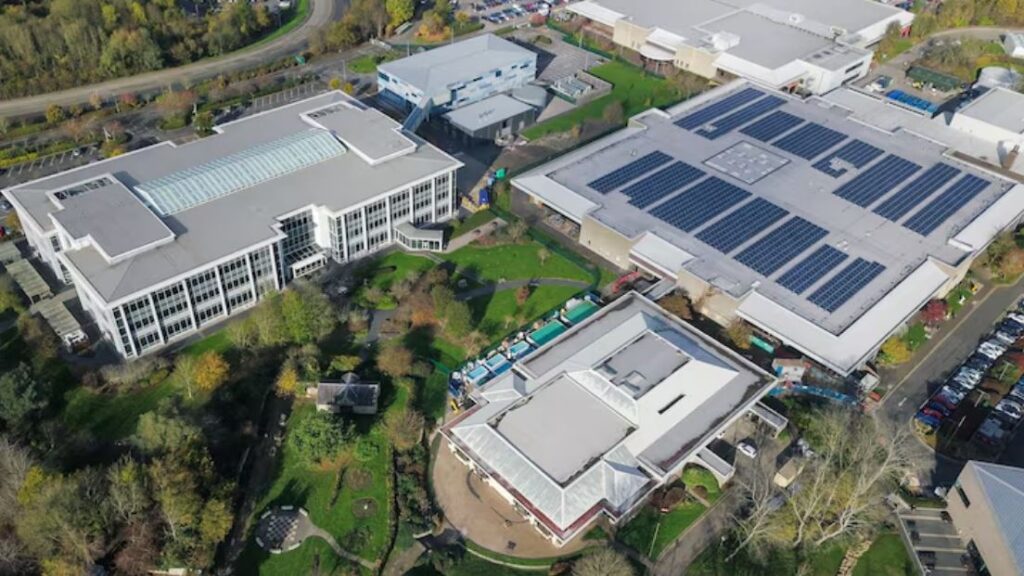
Grids powered by fossil fuels were once used to power factories at night. That hum is now powered more and more by solar energy. This change is about operational freedom, not just cutting emissions. Solar arrays collect sunlight during the day, and built-in storage keeps the lights on long after the sun sets. Silently, this change is taking place in emerging economies, industrial parks, and deserts.
Businesses are redefining industrial uptime by fusing highly efficient solar with exceptionally efficient storage. Think about a Nevada plant. Production lines now run smoothly through the night thanks to photovoltaic panels that generate power all day and sophisticated thermal storage systems that store the excess. For example, Synhelion’s thermal technology provides a very robust and effective substitute for batteries by storing heat in engineered bricks and then turning it back into energy.
| Information Type | Details |
|---|---|
| Topic | Why Solar Power Could Be the Key to a 24-Hour Factory Cycle |
| Category | Renewable Energy / Industrial Innovation |
| Key Focus | How solar + storage enables continuous factory operations |
| Main Technologies | Solar PV, Battery Storage (LFP), Thermal Storage, On‑site Generation |
| Industrial Impact | Stable energy costs, reduced outages, predictable production cycles |
| Societal Impact | Lower emissions, stronger local economies, cleaner industrial zones |
| Reference Link | https://ember-energy.org |
Storage efficiency at their pilot facility, DAWN, is 90% and will soon reach 95%. This approach is not only less expensive but also more environmentally friendly than lithium-ion, which deteriorates over time and requires limited resources. This invention is especially pertinent to sectors that require constant, high-temperature heat, such as cement or chemicals.
Solar powered by batteries is also developing quickly. A simple solar system with a 17 kWh battery can provide a consistent 1 kW for 24 hours in sun-rich cities like Dubai, which is sufficient to power critical industrial operations. Ember’s 2025 report states that 24/7 solar now costs $104 per megawatt-hour, which is much less than the cost of coal and nuclear.
Compelling opportunities are created by this change. Diesel generators and erratic grids are no longer necessary in industrial parks in Brazil, Vietnam, or India. They are implementing autonomous solar microgrids with predictive AI through strategic alliances. These systems ensure dependable uptime with minimal waste by analyzing power demand, controlling output, and distributing energy effectively across shifts.
Fascinatingly, even in areas with frequent cloud cover, the versatility of solar power is opening doors. Cities like Manchester can still reach 60% solar sufficiency, while Phoenix may reach 97%. When storage and load management are taken into account, the transformation is remarkably similar. Governments are taking notice. Decentralized solar is given priority in China’s energy plan, while industrial clean energy adopters in Europe are eligible for tax breaks.
Megapack batteries from Tesla are proving to be very effective grid substitutes, especially when used at mines and tech hubs. This solar shift is being subtly fueled by celebrity investors; for example, Leonardo DiCaprio backs solar projects, and Akon’s project uses solar mini-grids to electrify African villages. Vanity projects are not what these are. These models are replicable and scalable.
However, space-based solar power is more futuristic. Microwaves could be used to beam energy to Earth from satellites in direct sunlight. This once-theoretical idea is moving closer to reality as reusable rockets lower launch costs. Blue Origin and SpaceX are already investigating these options.
Factory operators especially benefit from this evolution. It enables 24/7 productivity without being dependent on fossil fuels or volatile energy prices. They are creating energy ecosystems that are remarkably inexpensive, remarkably purpose-driven, and remarkably adaptable by combining solar, thermal, and battery systems.
The idea of closing at night is becoming less popular. Solar is facilitating a new form of industrial autonomy in addition to powering factories. Clean, continuous manufacturing is now a reality, with every beam saved and every watt optimized. It’s working.